February’s Fungi Focus: Tripe fungus (Auricularia mesenterica)
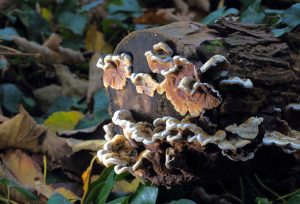
Brackets, crusts and jellies are the most commonly found fungi in the winter months, as I mentioned in my last post on the various species referred to as Witches’ Butter. These categories are essentially descriptive ones, however, aimed at helping one negotiate ones way to the correct pages in general field guides, rather than relating to particular family groupings and relationships based on more scientific principles.
One might find countless instances where the dividing line between a particular specimen is not particularly clear. Crusts, or resupinate fungi, often grow as brackets, for example, if the fallen trunk or log they are growing from them is oriented in a particular direction, and a good number possess fruitbodies with a gelatinous texture.
One such example where the dividing line between bracket, crust and jelly can seem unclear is the Tripe Fungus (Auricula mesenterica), which often adopts a partially resupinate form, with the spore-releasing ‘hymenial’ surface facing outwards or upwards as opposed to downwards. It also grows in undulating densely-packed shelves that project up to 3cm outwards from its substrate, with the upper surface covered in a felty hair.
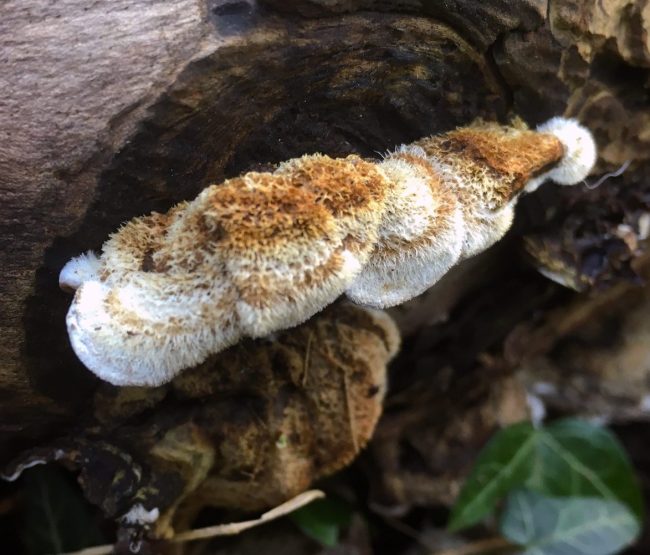
The felty upperside of the Tripe Fungus showing white and brown concentric zones
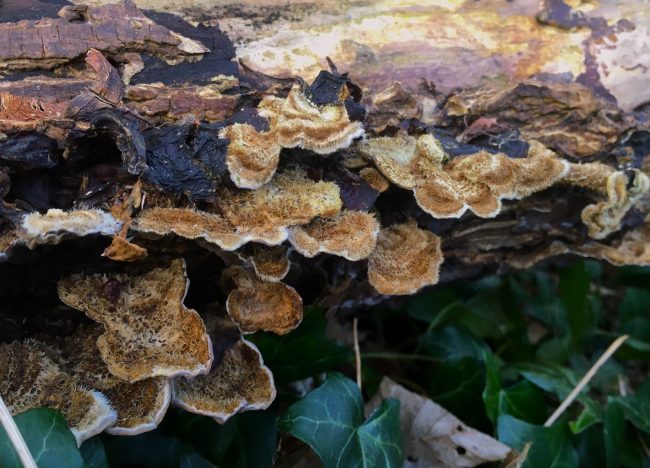
With its hairy upper cap, the Tripe Fungus, especially older specimens like these, might be confused for Hairy Curtain Crust (see image below)
These are amongst a few of the Tripe Fungus’ superficial similarities with the Hairy Curtain Crust (Stereum hirsutum), although the colour should give one pause for thought. Hairy Curtain Crusts are a bright orange tending through ochre to a darker brown and with yellow to tan coloured margins and undersides. The hairy upper surface of the Tripe Fungus is zoned into more muted whitish grey and tawny brown areas, its shelves again lighter at the margins.
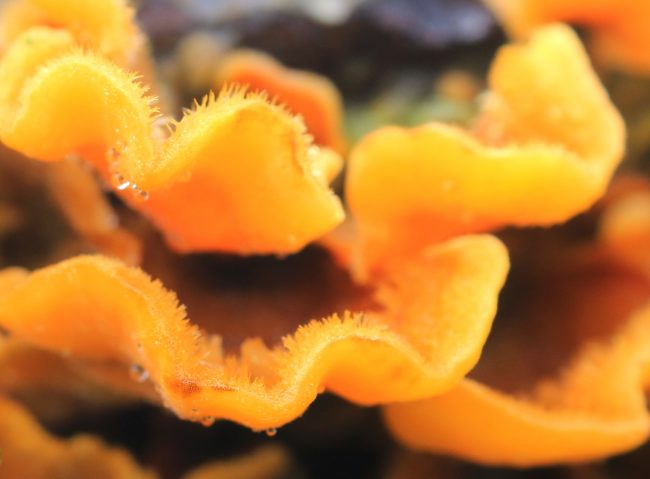
Stereum Hirsutum, or the Hairy Curtain Crust, forms brackets with hairy upper surfaces but can be distinguished due to its yellow to ochre colour and tough leathery texture
Both species are fairly commonly encountered throughout the year on the rotting logs and timber of dead deciduous trees and both linger long once they’ve emerged into sight. Perhaps they are more prevalent around the winter months because there are less other fungi about to distract our attention, but also because they are more durable than most, and will tolerate fluctuating temperatures that freeze and defrost them.
With age, the colours of both species tend to darken and merge, making them more difficult to tell apart if going on sight alone. The obvious distinguishing feature is if you touch or flick them. Hairy Curtain Crust is tough, leathery and, well, crusty. Tripe Fungus is gelatinous, rubbery and yielding, the Latin name situating it within the genus Auricularia, and relating it to the Jelly Ear (Auricularia auricula-judae).
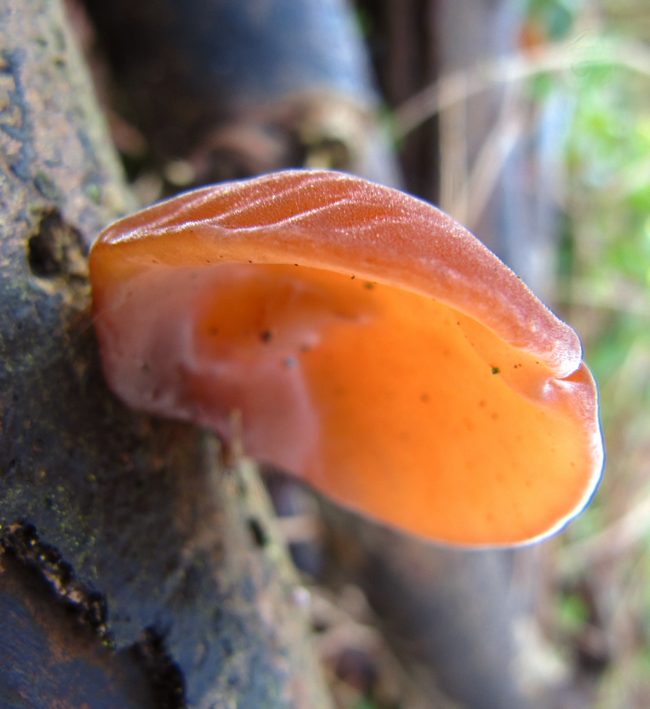
The Jelly Ear, a close kin to the Tripe Fungus
If you look at the underside these two Auricularia types, at the soft, smooth surface from which the spores are released, you’ll see the similarities, although the flesh of the Tripe Fungus is a lot thicker and more veined than that of the Jelly Ear, and of a clear light grey tending to brown in colour against the latter’s darker chestnut. You’ll also notice it is quite distinct from the zoned yellowish and hard underside of Hairy Curtain Crust.
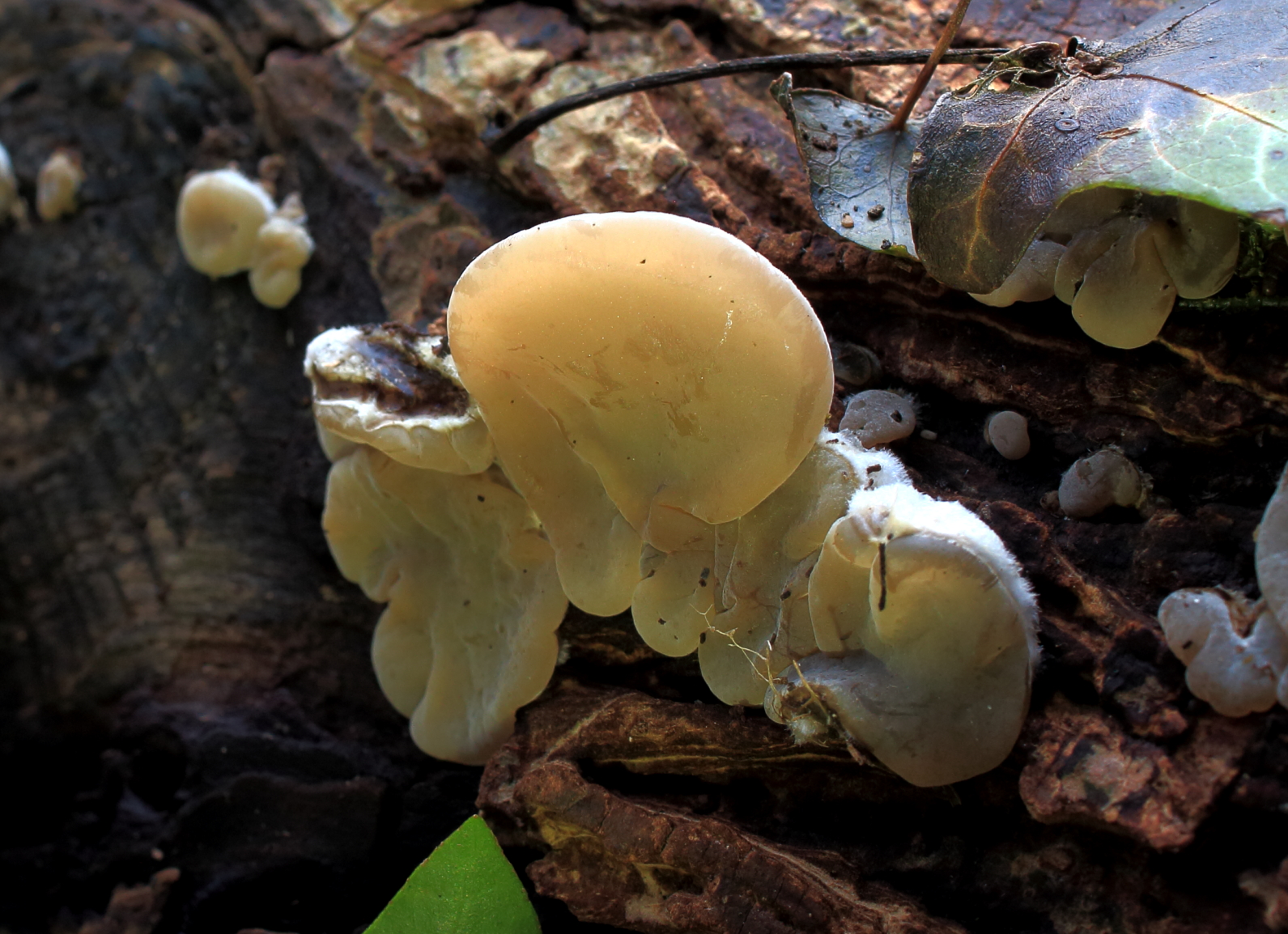
The spore-releasing underside of the Tripe Fungus is similar to the spore hymenial surface of the Jelly Ear
The mesenterica part of the name, as Pat O’ Reilly reveals on his First Nature entry for the species, is “derived from the Ancient Greek word mesenterion meaning ‘middle intestine’”, vividly evoking the busted gut appearance of this lower or outward-facing surface. This word is also used in the Latin binomial for Tremella mesenterica, one of the two jellies known as Yellow Brain Fungus covered last month sometimes referred to under the wide-ranging term Witches Butter. In the past, the Tripe Fungus was also quite often referred to as the Grey Brain Fungus.
One feature that links Tripe Fungus to other jellies such as Jelly Ear, Warlock’s Butter (Exidia nigricans), the similar-looking Black Witches Butter (Exidia glandulosa) or Crystal Brain (Exidia nucleata) - but not, curiously, the two species of Yellow Brain Fungus - are the fat sausage-shaped allantoid spores.
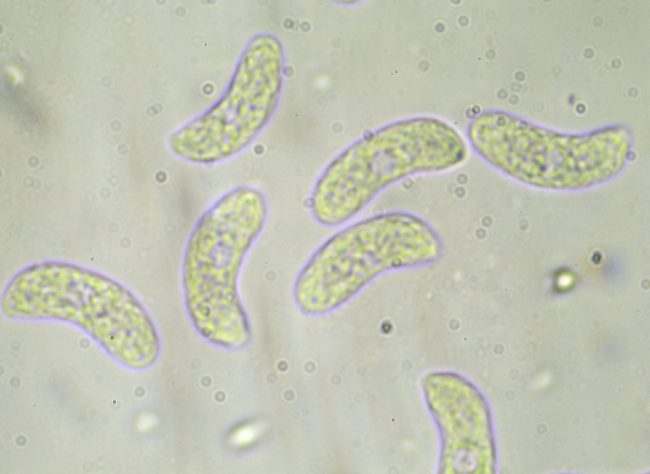
The allantoid, or sausage-shaped, spores of the Tripe fungus are similar to a number of other jellies
In terms of visible features, however, they look quite different, the hairy upper-side being the one thing that sets the Tripe Fungus apart from these types of a similarly rubbery consistency.
I have found quite a lot of Tripe Fungus around from early November till now. Admittedly, it has been a fairly mild winter with few serious cold snaps, and last month could hardly be described as a “dry January”. Nonetheless, Tripe Fungus seems to possess a similar robustness and longevity to that of the Jelly Ear. They can be considered uncommon but locally abundant in that if they are growing in your area, you’ll find them all over the place, but those areas where they do grow are on the decline due to the increasing scarcity of their favoured host, which is dead elm.
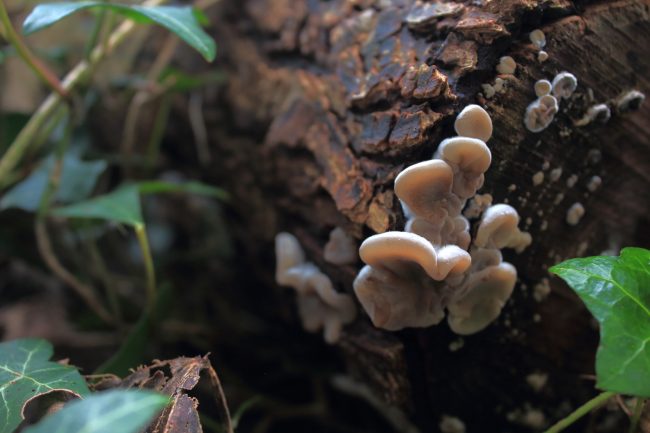
Tripe fungus emerging from rotting elm log
Certainly in the copse local to where I live there was no shortage of them growing on stacked rotting elm logs alongside another species that shares this substrate, the Wrinkled Peach, (Rhodotus palmatus), which in itself points to a good reason not to keep woodlands too clean and tidy.
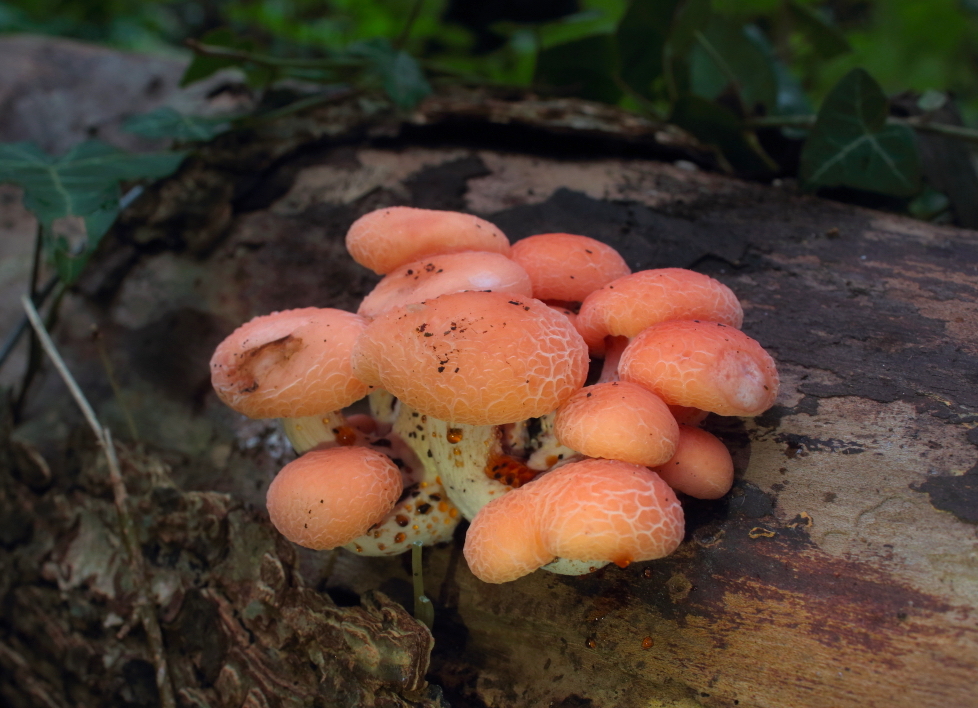
Wrinkled Peach mushroom growing on the same rotting elm log substrate as the Tripe Fungus
Admittedly, at first glance Tripe Fungus neither looks nor sounds as appetising as the Wrinkled Peach – not that one should consider eating either! However, in the right light, they can look rather striking and their combination of textures and visible features makes them easily identified.
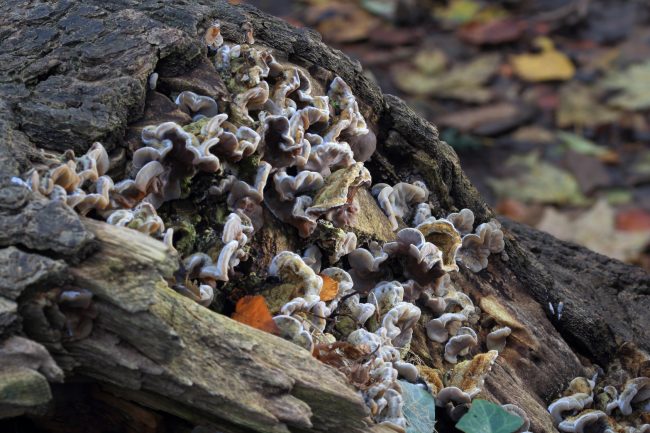
Tripe fungus growing in densely packed undulating shelves
What seems somewhat strange for a fungus as distinctive and as common as this, which pops up in all the major field guides, is the apparent lack of much of interest to say about it. I’ve pored through all my more discursive and descriptive books about mushrooms, toadstools and their place in culture and nature, from R.T and F.W. Rolfe’s The Romance of the Fungus World (1925) through to Nicholas Money’s Mushroom (2011) and Pat O’ Reilly’s Fascinated by Fungi (2011), but the Tripe Fungus doesn’t get so much as a check-listing. You’d think that it’s appearance alone would lead to similar folkloric associations as its close family relation the Jelly Ear, but apparently not.
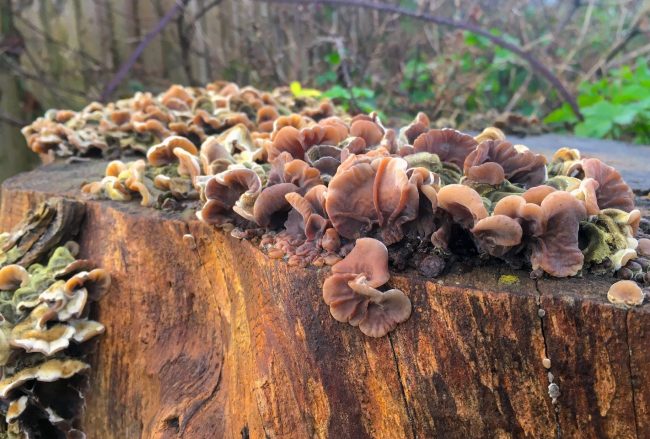
Tripe Fungus, when it appears, it appears in abundance
Perhaps the example of Tripe Fungus highlights how little is known about the kingdom of fungi, and the scant scientific attention paid to individual species. Does it have a significant role in nature, are there particularly insects that eat it, or other fungi that associate with it? Maybe someone out there might have some answers, which in itself seems a good enough reason to justify putting this funny-looking fungus under the lens for February’s Fungi Focus.
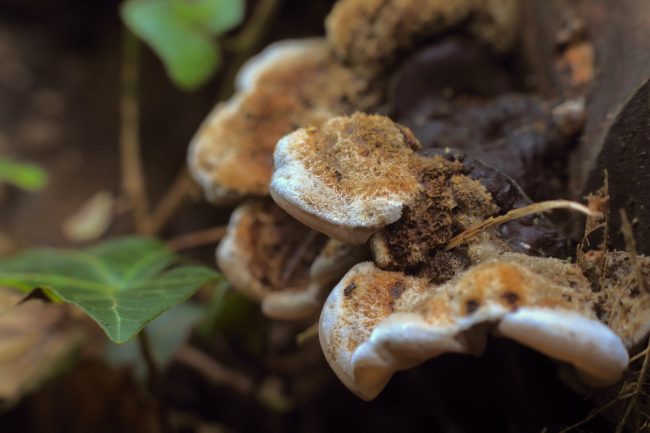
Auricularia mesenterica does not look too tripe-like from above.
Comments are closed for this post.
